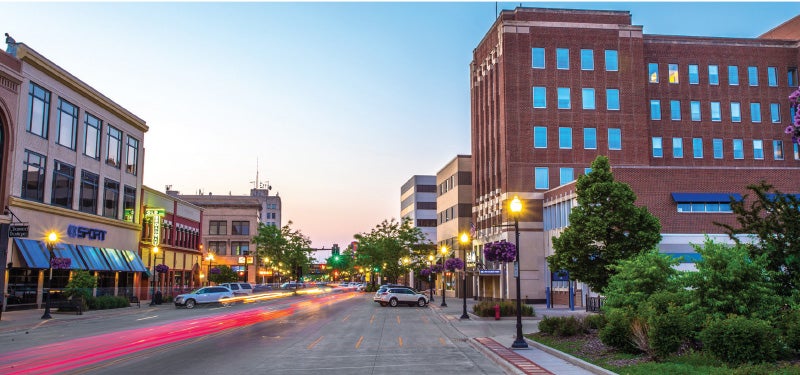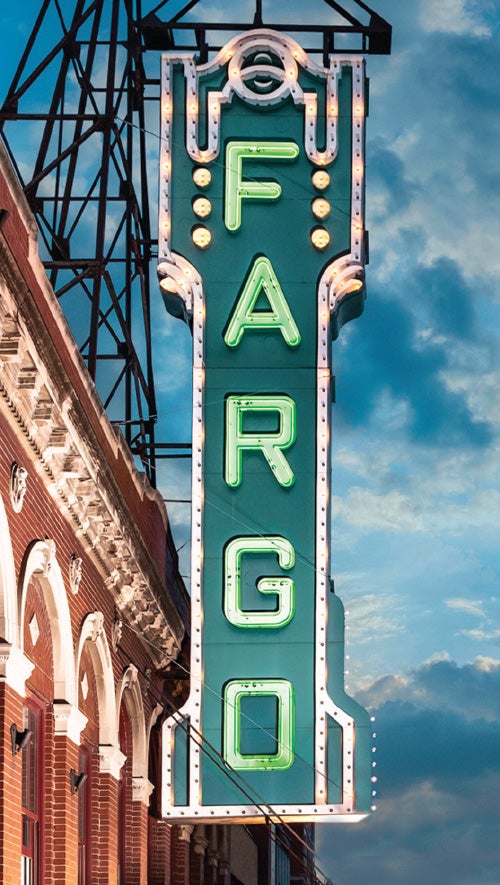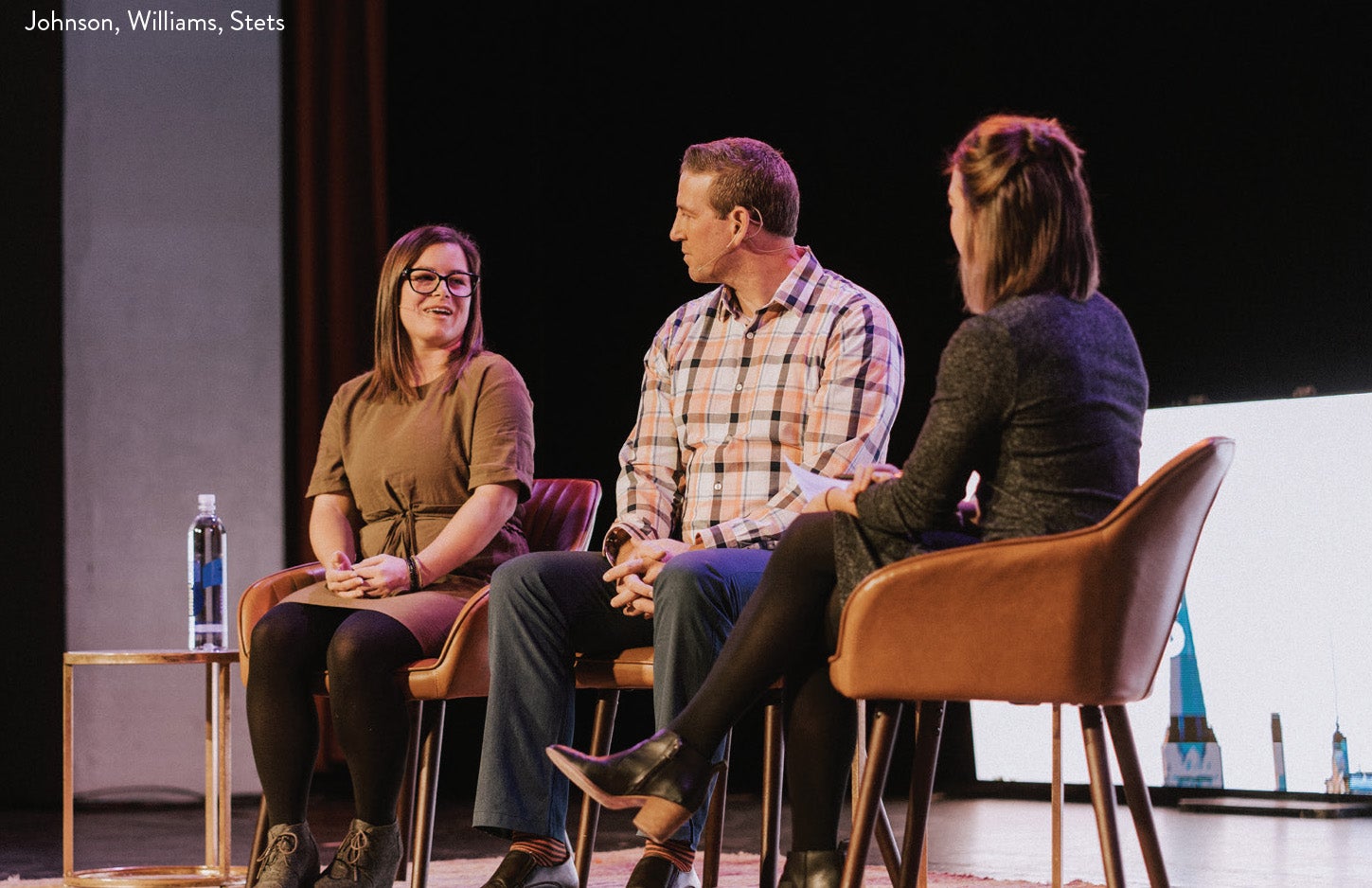Fifteen years ago, the Institute produced the first Aspen Ideas Festival, throwing open its doors to engage the public and showcase the work and force of its programs. This year, the Aspen Ideas spirit came to a new, unexpected community: Fargo, North Dakota. As a senior program associate with the Aspen Ideas Festival, I led an effort—along with former summer staffers and Institute interns Abbie Haug, Skyler Stoner, and Izzy Waite—to bring the magic of the Ideas Festival back to our hometown. With about 230,000 people in its metropolitan area, Fargo is undergoing an urban and cultural renaissance. “So often, when people outside the Midwest think of Fargo, their mind goes to the movie,” Courtland Miller, of the redevelopment company the Kilbourne Group, said as he led a group of event participants in a walking tour of downtown Fargo. “It’s fun to see people visiting Fargo—whether skeptical or openminded—discover the true spirit of the city. It has a strong economy. A thriving entrepreneurial scene. A culture boom centered on a vibrant downtown. And, of course, the natives are friendly.”

I was first introduced to the Aspen Ideas Festival as an attendee in the summer of 2015. I was in Aspen representing a private family foundation based in Fargo, where I ran grantmaking programs for youth. Through those programs I met Skyler, Abbie, and Izzy, then high-school seniors. The opportunity to bring an Aspen Ideas–style event to Fargo presented itself when I applied for the Aspen on the Ground program, which provides seed funding and a two-week sabbatical for young Institute professionals to bring a project back to their home community. While they were working at the Institute last summer, Abbie, Skyler, Izzy, and I planned what came to be Fargo Ideas: An Evening of Conversation. Modeled after the Ideas Festival’s Afternoon of Conversation, the event featured four moderated dialogues with Institute staff members and local leaders.
 The Institute wasn’t widely known in Fargo. But on October 16, hundreds of people poured into Fargo’s most iconic architectural treasure, the Fargo Theatre, a beautifully restored art deco theater sitting in the middle of Broadway. People waited in a line that extended around the block as the marquee blinked brightly overhead. “The Fargo Theatre is the gem of downtown Fargo,” Simone Wai, a local community organizer and former Aspen Ideas scholar said as she was waiting for the doors to open; she had already attended a welcome cocktail reception in the Loretta Building, one of Fargo’s many restored historic buildings. “It’s always been a central gathering place for ideas that spark conversations.”
The Institute wasn’t widely known in Fargo. But on October 16, hundreds of people poured into Fargo’s most iconic architectural treasure, the Fargo Theatre, a beautifully restored art deco theater sitting in the middle of Broadway. People waited in a line that extended around the block as the marquee blinked brightly overhead. “The Fargo Theatre is the gem of downtown Fargo,” Simone Wai, a local community organizer and former Aspen Ideas scholar said as she was waiting for the doors to open; she had already attended a welcome cocktail reception in the Loretta Building, one of Fargo’s many restored historic buildings. “It’s always been a central gathering place for ideas that spark conversations.”
 On stage, three chairs were set in front of an image of Fargo’s skyline while neon lights accented the flanks of the stage. The evening began with Emily Stets of the Institute’s Sports & Society Program leading a discussion about the importance of children’s play time with Ryan Williams, the chief operating officer of TNT Kid’s Fitness, an adaptive gymnastics club, and Rachel Johnson, the head of the local Special Olympics chapter. Both organizations empower athletes of all abilities, embracing kids’ strengths instead of focusing on weaknesses. “We label individuals so often as having a disability,” Williams said, “when it’s truly about what their ability is and how we grow that ability.”
On stage, three chairs were set in front of an image of Fargo’s skyline while neon lights accented the flanks of the stage. The evening began with Emily Stets of the Institute’s Sports & Society Program leading a discussion about the importance of children’s play time with Ryan Williams, the chief operating officer of TNT Kid’s Fitness, an adaptive gymnastics club, and Rachel Johnson, the head of the local Special Olympics chapter. Both organizations empower athletes of all abilities, embracing kids’ strengths instead of focusing on weaknesses. “We label individuals so often as having a disability,” Williams said, “when it’s truly about what their ability is and how we grow that ability.”
Caroline Hopper, of the Institute’s Citizenship and American Identity Program, moderated a dialogue with two elected officials encouraging better rather than fewer arguments. State Superintendent of Public Instruction Kirsten Baesler and Fargo City Commissioner John Strand talked through the underlying tensions between those who want North Dakota to stay the same and “the other side, wanting and needing North Dakota to be different.” One recent test was between the leaders of its oil-based economy and its native people at the Standing Rock protests. “Development and oil,” Strand said, are in conflict with “the spirituality of a people.”

Corby Kummer, the director of the Institute’s Food and Society Program, led a conversation with Amy Thielen, a former Food Network host, and Andrea Baumgardner, a prominent local chef, on how food influences our cultural identity and connects us as individuals. Thielen said her “ruralness” was what connected her with the other chefs when she worked in celebrated New York City kitchens. “It’s always about relationships,” Baumgardner said. “Even restaurants, and especially food.” She and her husband, Brett Bernath, are the founders of BernBaum’s, a restaurant next door to the theater that offers a New York–style deli and a North Dakota influenced menu. Baumgardner spoke enthusiastically about their strong connections to the local farmers and community groups who supply the restaurant’s ingredients.
The night closed with a discussion with the leaders of the forthcoming Theodore Roosevelt Presidential Library, at last being built in the western part of the state adjoining the national park that bears T.R.’s name. “North Dakota had a huge impact on Roosevelt and on his ideas,” historian Rolf Sletten said, “and eventually on some of his politics and policies.” By the time Roosevelt got to North Dakota, in September 1883, the buffalo were essentially gone; he saw firsthand the devastation caused by unrestricted hunting and overgrazing. Many of his ideas around conservation, Sletten said, stemmed from the observations he made on his ranches, which he later called the “cradle of conservation.”

Why will North Dakota be the site of this long overdue presidential library? Ed O’Keefe, former New York media executive and newly appointed CEO of the library, said that T.R. was “a New Yorker by chance, but a North Dakotan by choice.” After the deaths of his wife and mother in close succession, Roosevelt returned to the badlands of North Dakota. “He came to mourn, to heal, to recover, and to discover,” O’Keefe said. “This place, North Dakota, is where his life changed and he found the resilience to go on.”
Moderator Bill Marcil Jr., the fifth-generation publisher of the state’s largest newspaper, hopped on the floor like a little kid—looking like one, too, wearing a Davy Crockett hat that he’d brought for the occasion—and said, “I just want the folks at the Roosevelt Library to come to my house and tell me stories.” He’ll have that chance, O’Keefe responded—or the closest thing. The new library, he said, will not be “a box in the badlands with objects we can all come view. It can be a place of civic discussion. When people ask what’s my aspiration for the museum, I say the JFK Library meets the Aspen Institute.”
He’ll be in the right place. “Ideas need to breathe actual air,” Thielen said as the evening came to a conclusion. “To be exchanged in a public forum. That’s how they thrive. Ideas zip around online, fast and light, but they don’t really take root there. It turns out that Fargo, a surprisingly diverse community surrounded by acres upon acres of deep topsoil, is the perfect place to plant good ideas.”
Jonathan Melgaard is a senior program associate with the Aspen Ideas Festival and the Institute’s Public Programs. Fargo Ideas was produced in partnership with Folkways and Emerging Prairie. For more information and to see sessions from the event, please visit fargoideas.com.